What's that wild vine on tree? Are those grapes?! Wild grapes are closely related to table grapes and easy to identify for beginning foragers. In this post I'll tell you everything you need to know about identifying, harvesting, and cooking with all their edible parts.
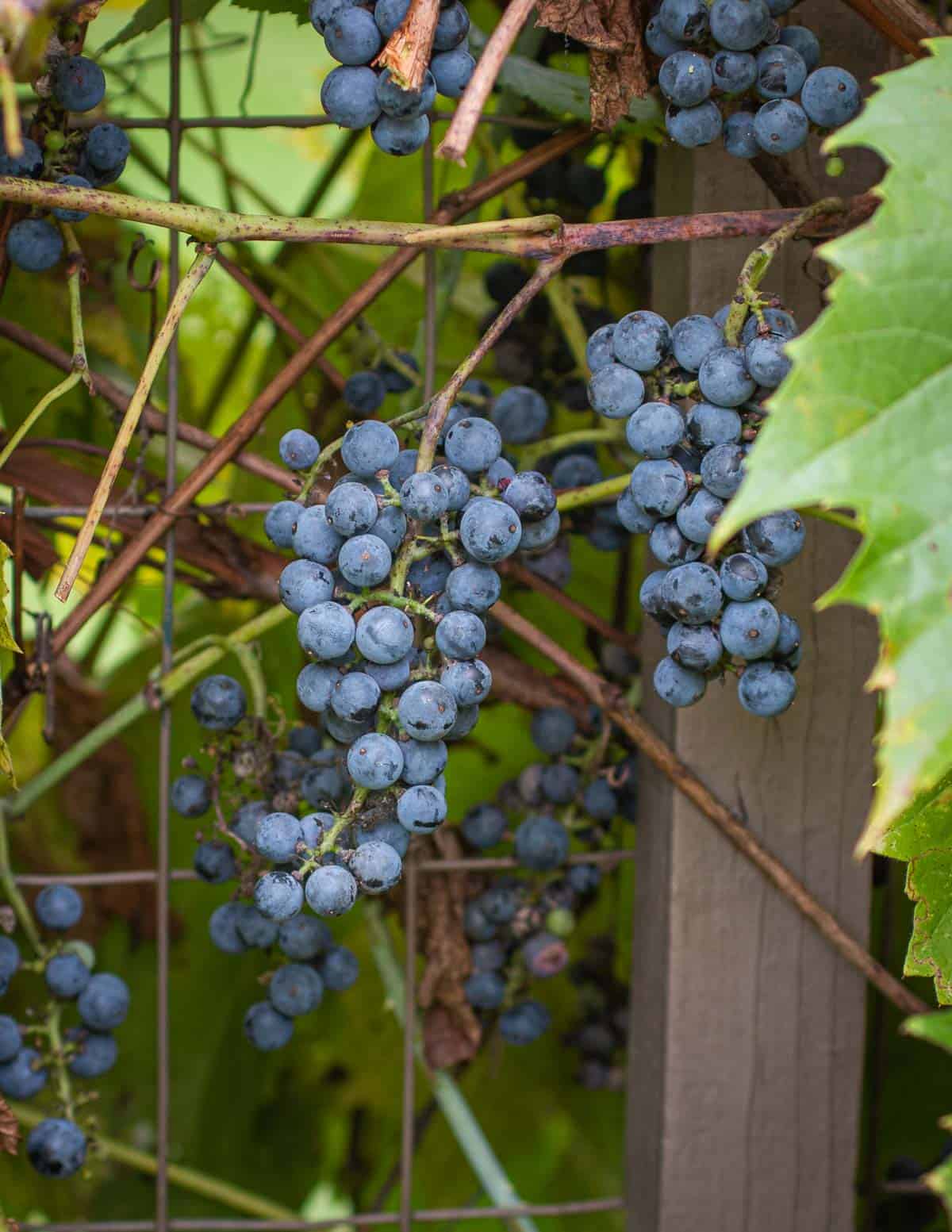
Wild grapes are the first wild fruit I ever picked, tasted, and really enjoyed cooking with. I first read about my local riverbank grape (Vitis riparia) that grow in the Midwest in the book The Forager's Harvest by Samuel Thayer.
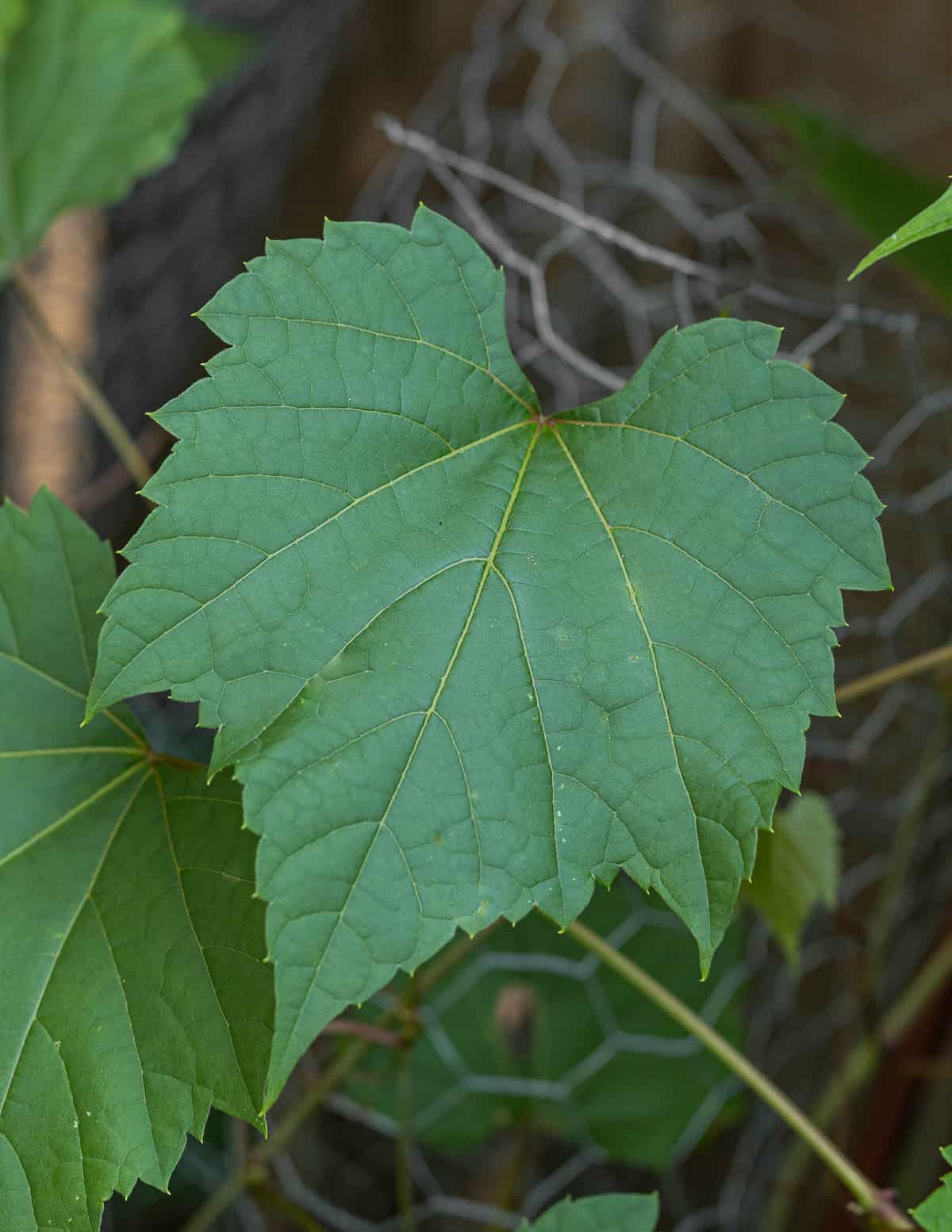
Wild Grape Vine Identification
This post focuses on Vitis riparia-the most common wild grape in North America. Vitis aestivalis, the summer grape, I see occasionally but is not as common. There's many other plants in the grape family you might find, like the fox grape and Oregon grape. Any edible wild grape can be used as I describe here.

The plants appear as spreading, woody vines with heart-shaped, lobed leaves. They climb trees and other plants to photosynthesize. Once you know them, you'll be able to spot them at a distance from anywhere.
Key ID Points
- The tough leaves have toothed edges with raised veins on the underside.
- Very young leaves are light yellow-green.
- Mature leaves are darker green. Each vine has small, young tendrils at the edge.
- Leaves can vary drastically in size with some varieties.
- The bark peels off in strips on the branches of older grape vines.
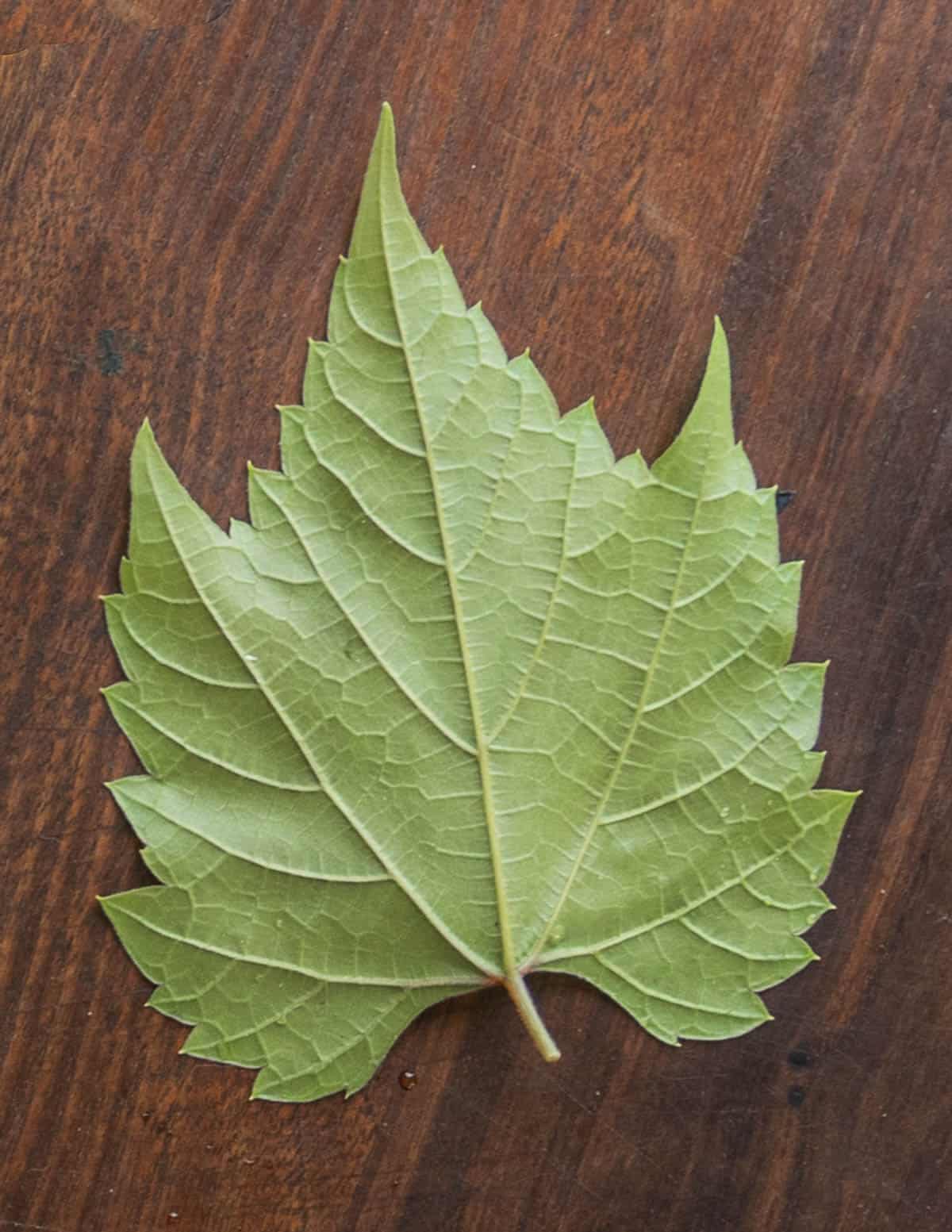
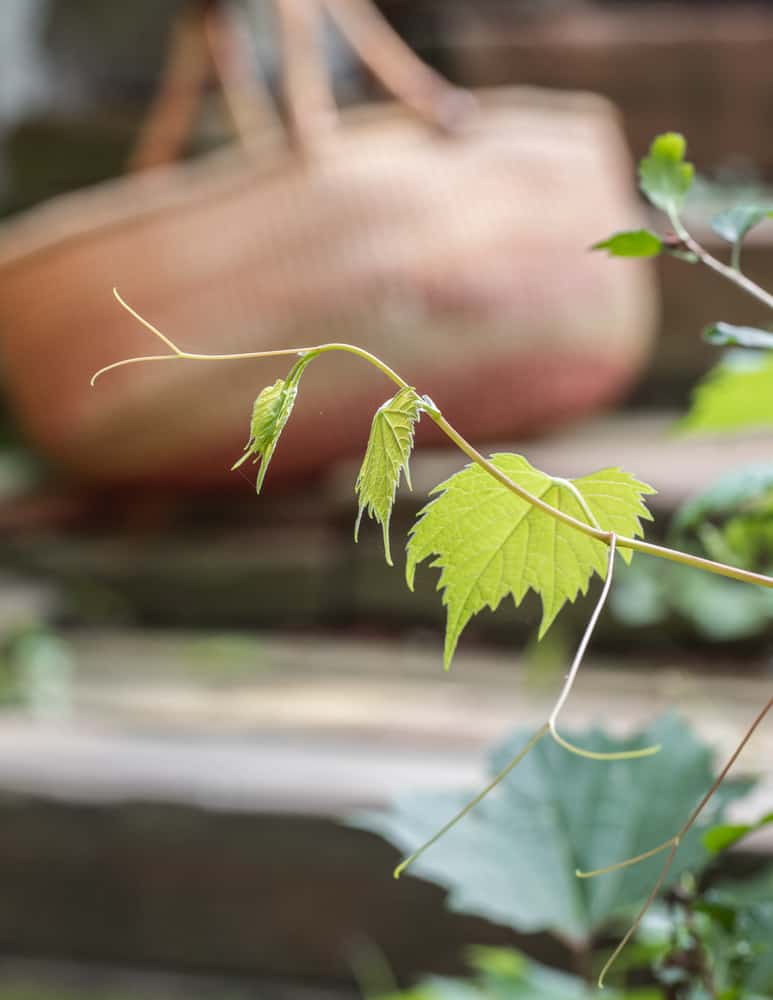
In the winter, you can look for grape stems and vines hanging from trees.
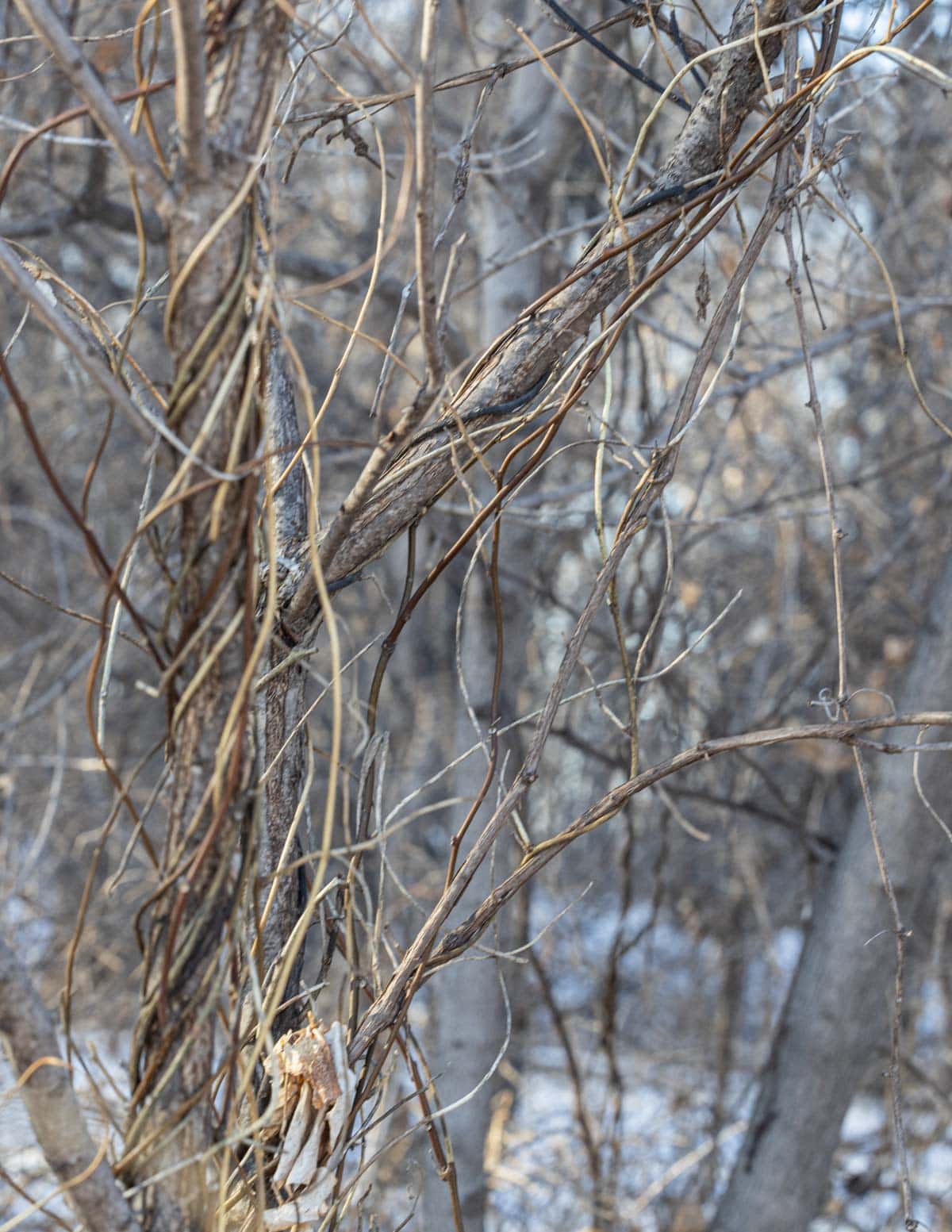
Wild Grape Look Alikes
There's a few look alikes beginners should be aware of. The two most common I see are Canada moonseed and Virginia creeper. False grape (Ampelopsis sp.) is also a look alike but I don't see it often, and it's harmless if consumed on accident.
Canada Moonseed (Menispermum canadense)
Canada moonseed is also a vine, and could be mistaken for wild grapes at a distance. This is the only, real poisonous wild grape look alike I know of.
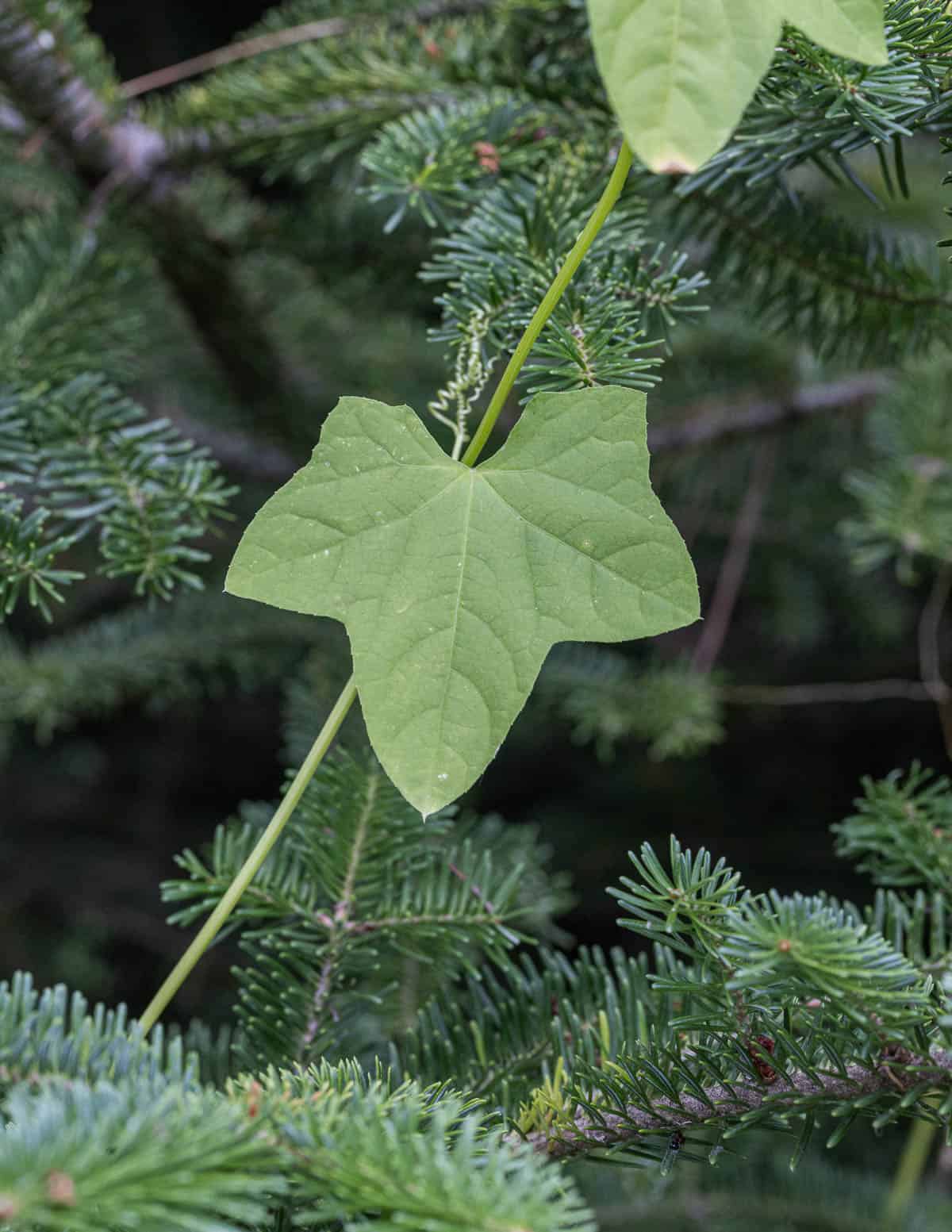
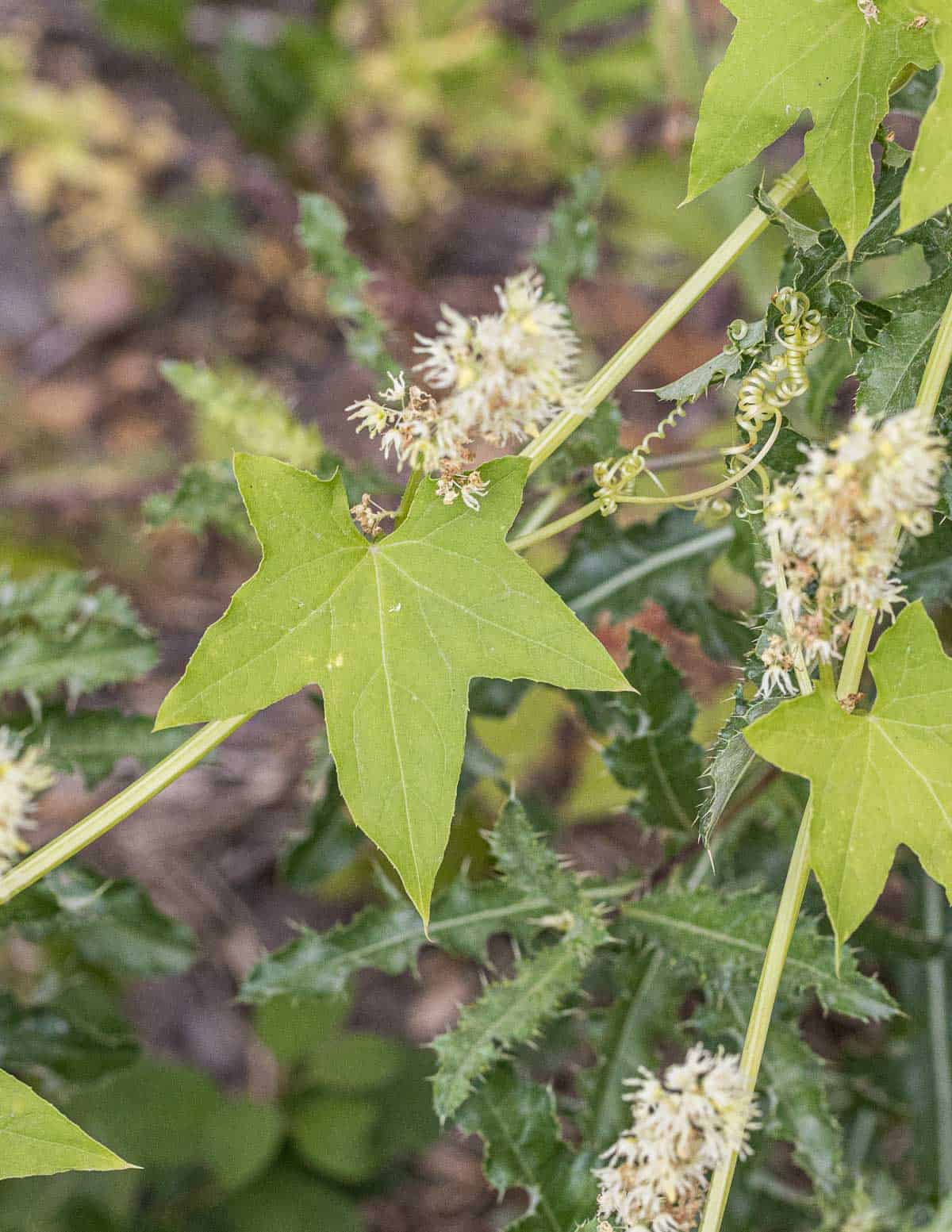
Canada Moonseed vs Wild Grape
Here's a few key points on how to separate them from grapes:
Canada Moonseed:
- Lacks teeth on the leaf margins
- Is often noticeably paler green color, especially when young.
- The stems are thinner and more delicate than grape vines.
- Canada moonseed vines spiral around their support, while grapes do not.
- The fruit contains a single crescent-shaped seed. Grapes have round seeds.
- The fruit isn't nearly as bountiful as grapes and doesn't grow in tight clusters.
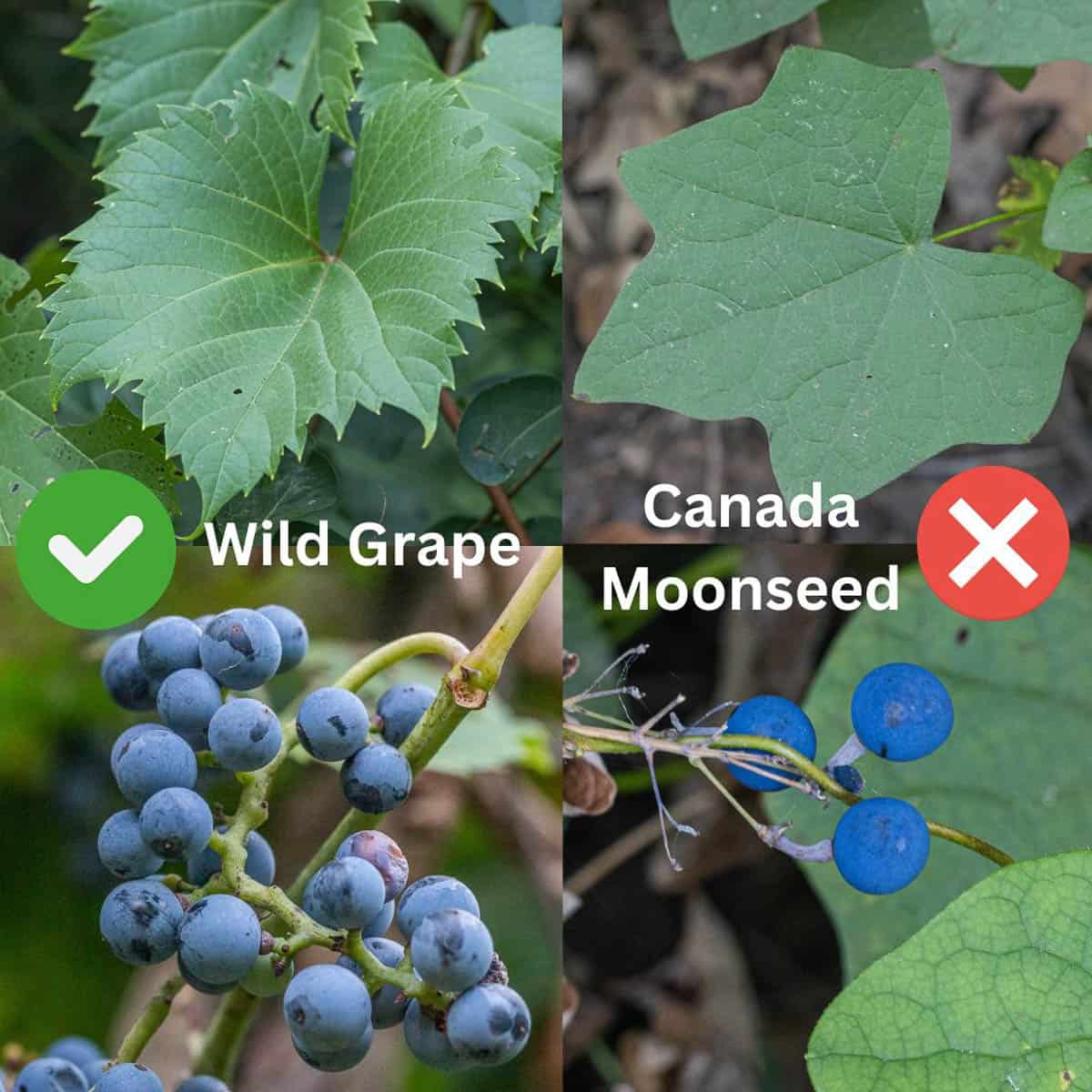
Virginia Creeper / Woodbine
Virginia creeper (Parthenocissus quinquefolia) is a common, aggressive growing vine. It's the most common wild grape look alike I get messages about. The plant has palmately compound leaves made up of five serrated leaflets.
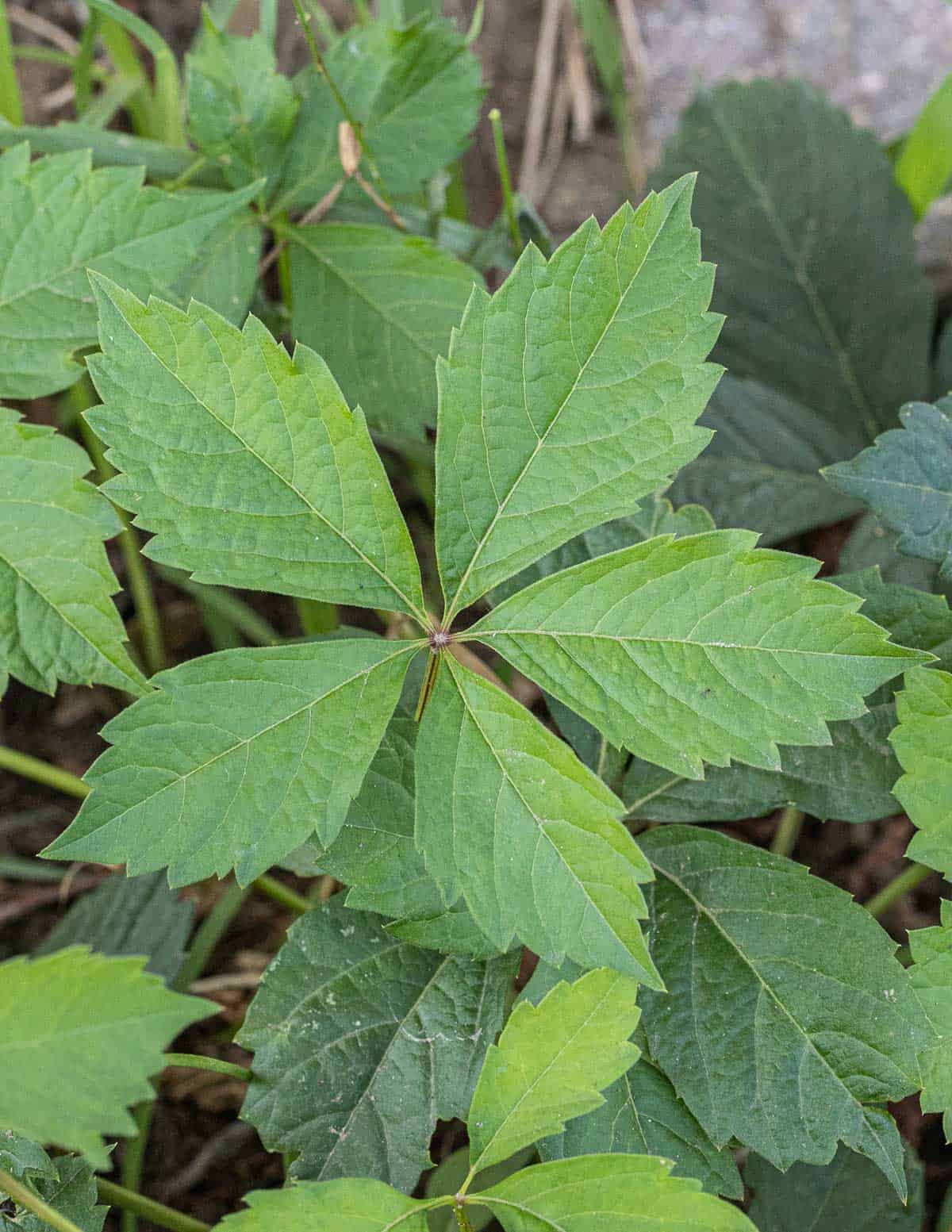
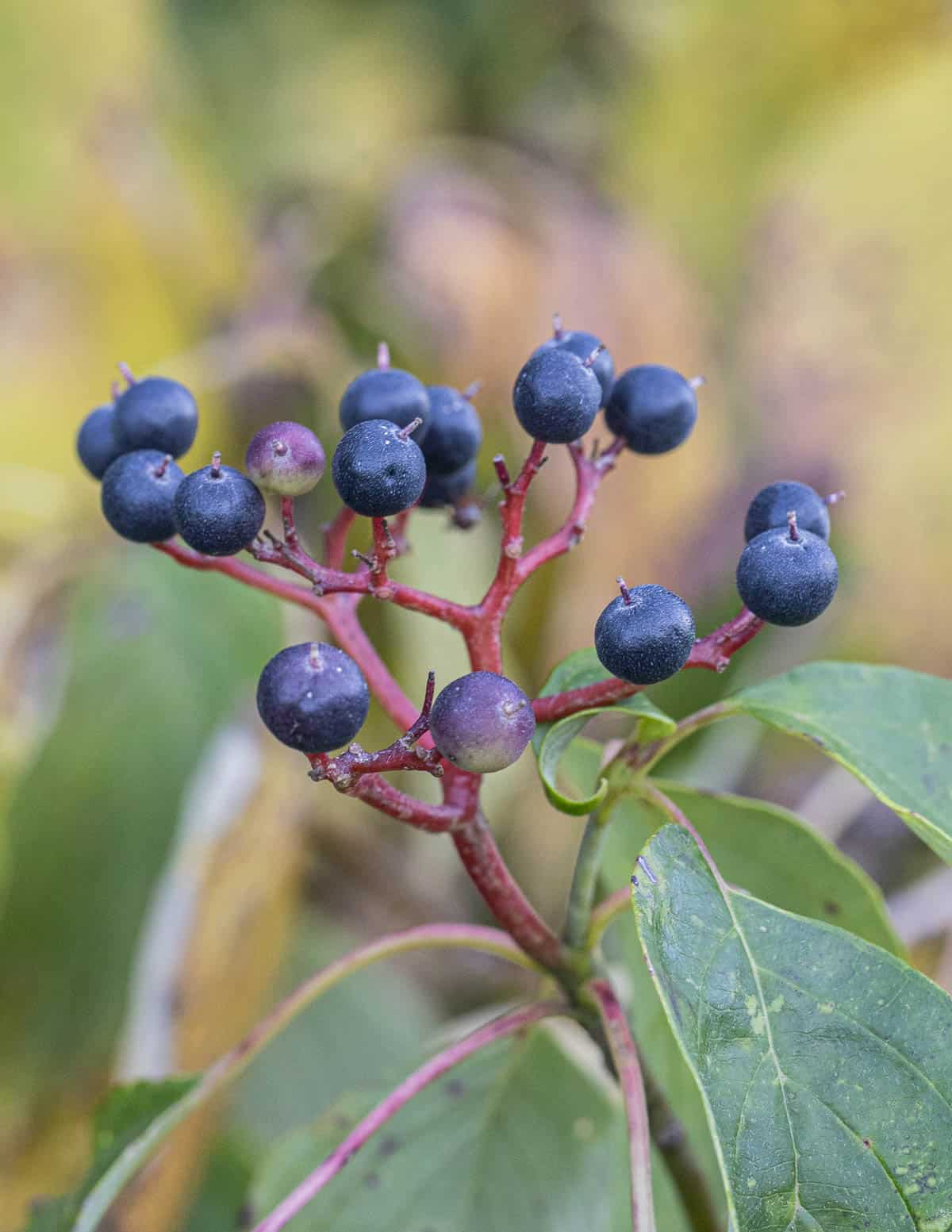
Virginia creeper fruit doesn't grow in clusters like grapes. An easy way to separate it from grape plants is the berries fruit on red stems. The fruit tastes bad, but is harmless.
Habitat
Wild grapes grow just about anywhere. I see them creeping up yards and fences, climbing trees, and around the edges of forests. As the name implies (river grape) they also love to grow along rivers and streams.
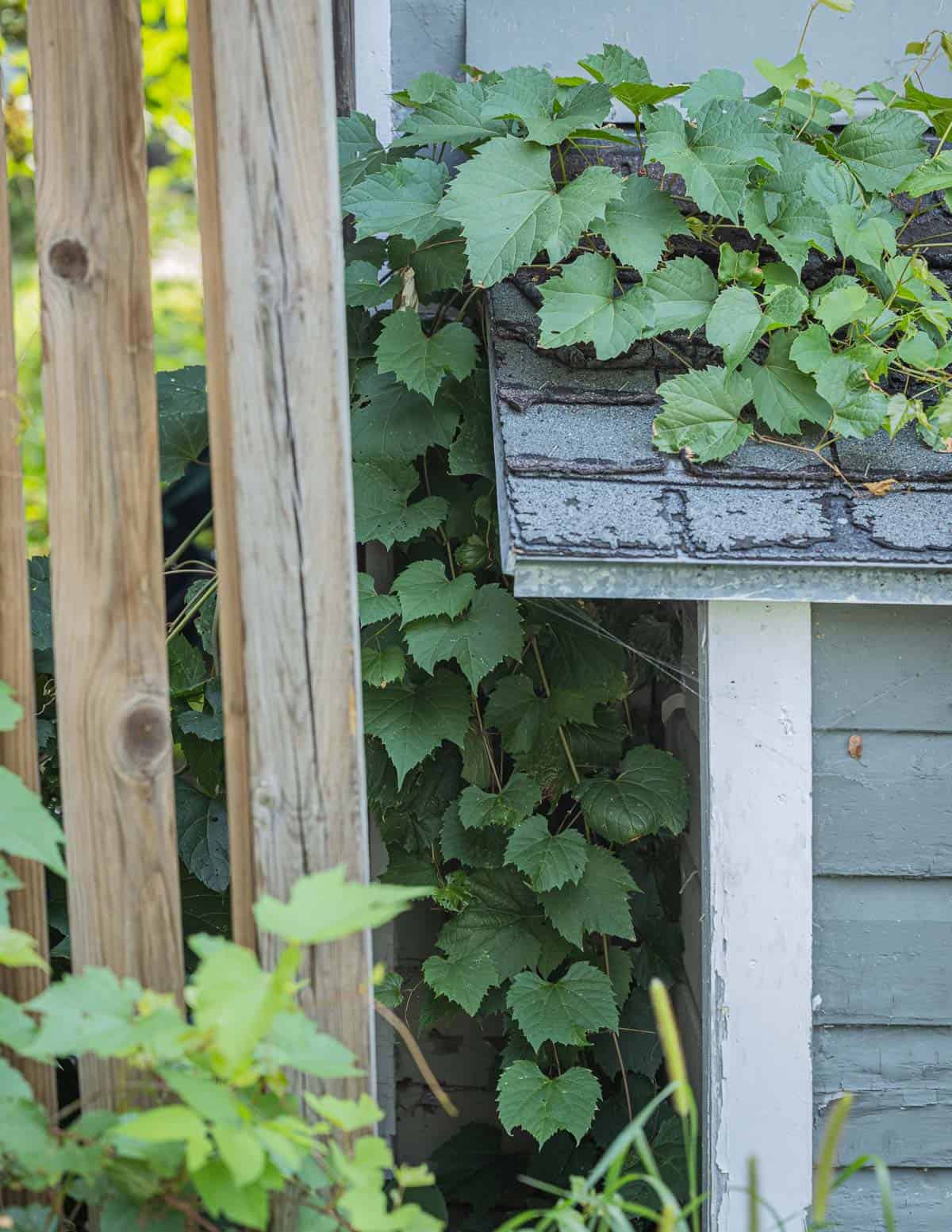
My grandmother has a wild grape vine that has grown up her trellises on the side of their deck, and their friends come every year to pick the grapes and make wild grape wine.
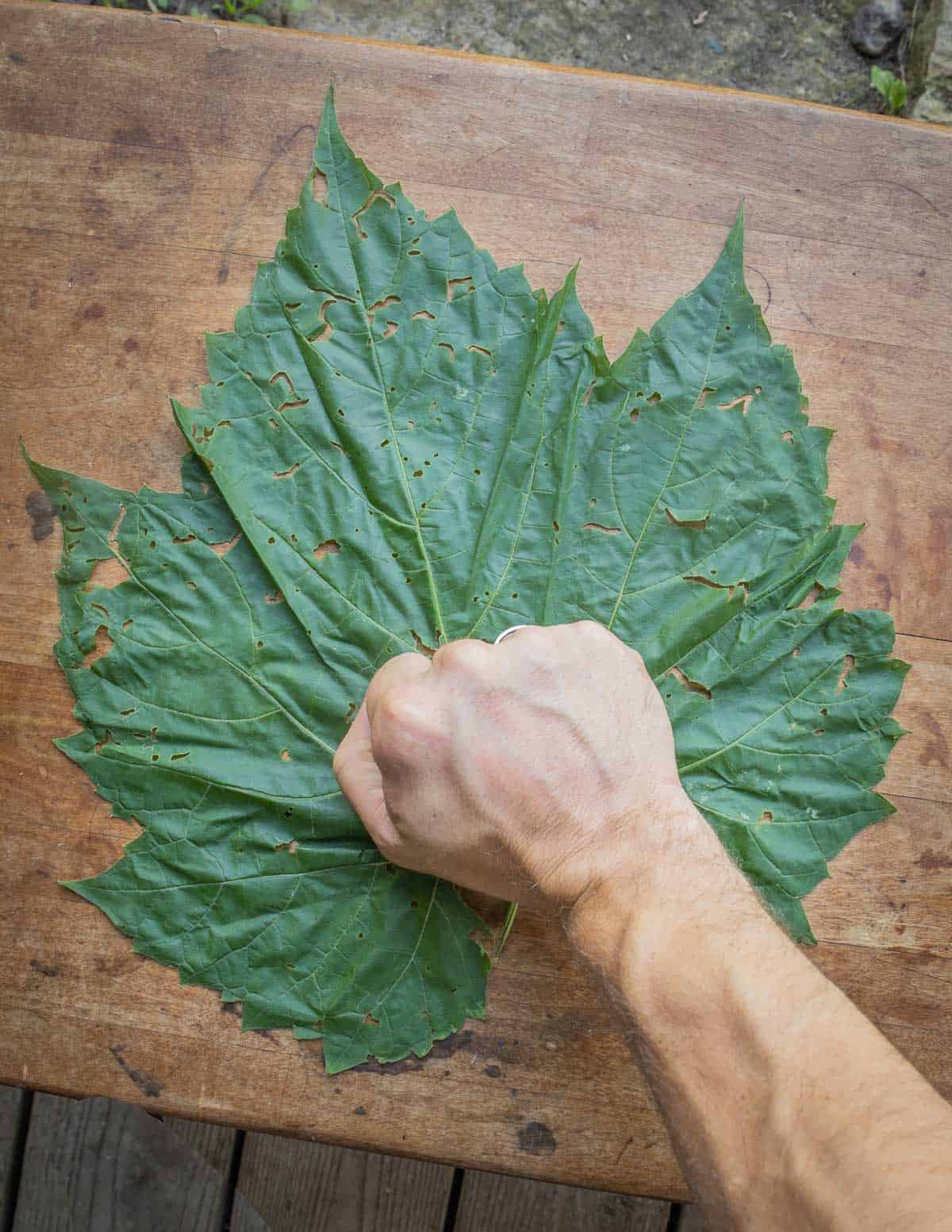
When to Harvest Wild Grapes
Grape harvest season is generally around mid-late August, but my harvest plan begins much earlier. If you're out foraging during the growing season, it's easy to see where the grapes will be fruiting heavy. Make a note of spots you see during the year and come back when they're ready.
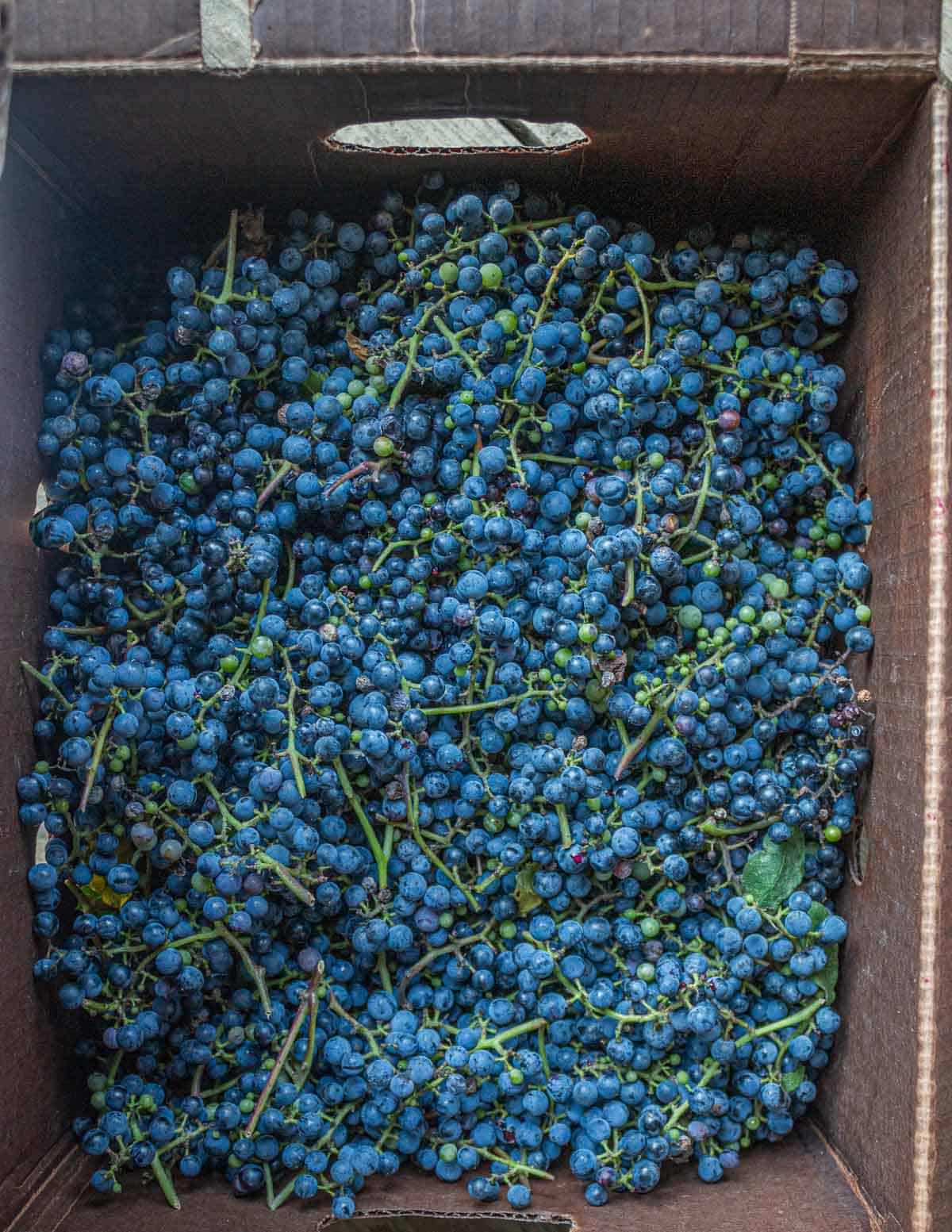
When the grapes are ripe and deep purple (preferably without any unripe green grapes), cut off whole clusters with a scissors and put them in a box or other container.
I never bother to harvest grapes after a frost, as some recommend as, by the time the frosts come, our Midwest grapes will be dried out.
How to Make Wild Grape Juice
Once I bring the grapes home, I try to process them into juice quickly so they don't dry out in the fridge. Here's what I do:

Take the grapes, stems and all, making sure they're clean and free of grit (taste a few to make sure and wash if you need/want) and put them in a large pot. Next, I mash the grapes up with a potato masher, mixing it around here and there to make sure I'm getting grapes from the bottom.
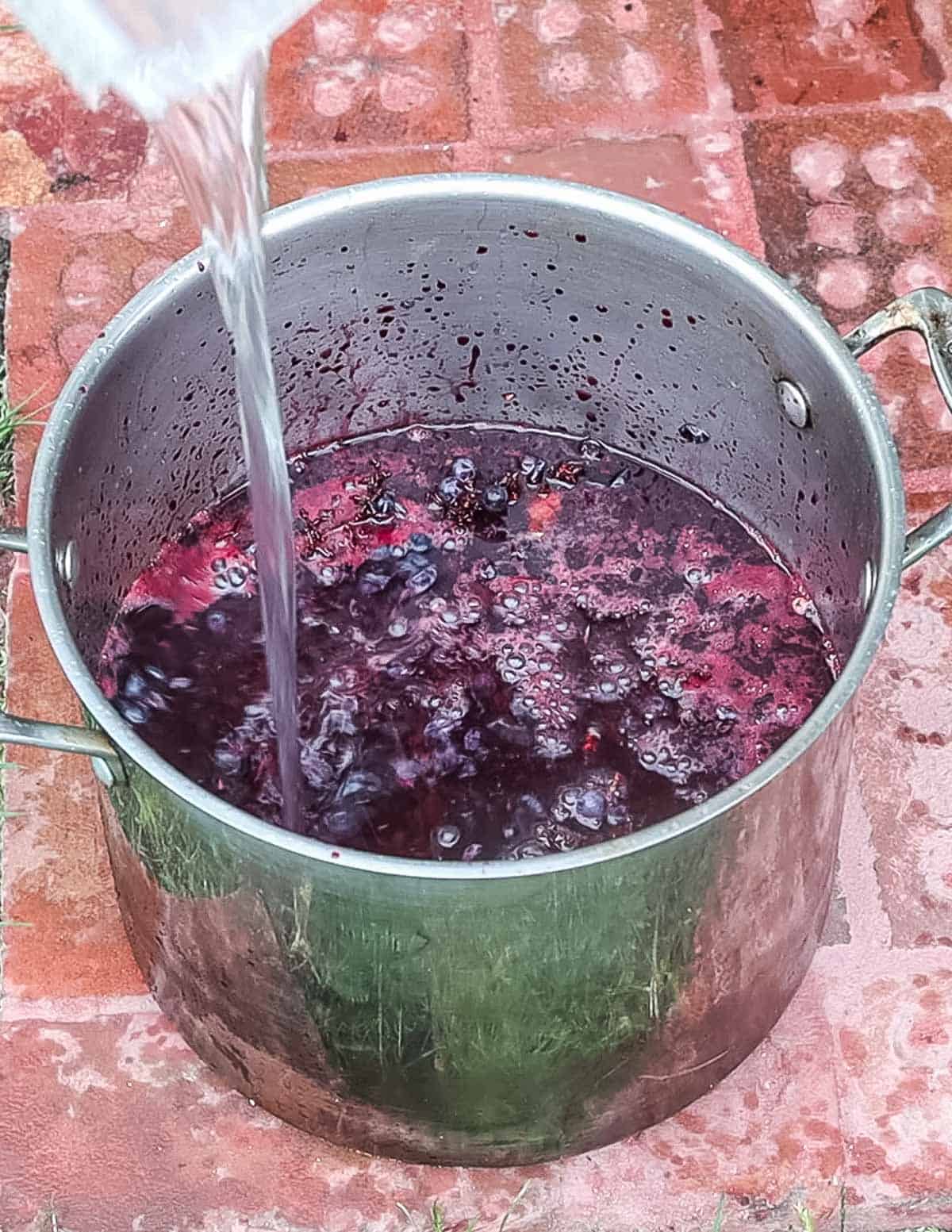
When the grapes are mashed up and juicy, I add some water, just enough to make sure that the grapes are completely covered by an inch or so of juice. The reason for the water is that wild grape juice is very thick, and a little extra liquid will make processing much easier-it will not dilute the strong flavor of your wild grape juice.
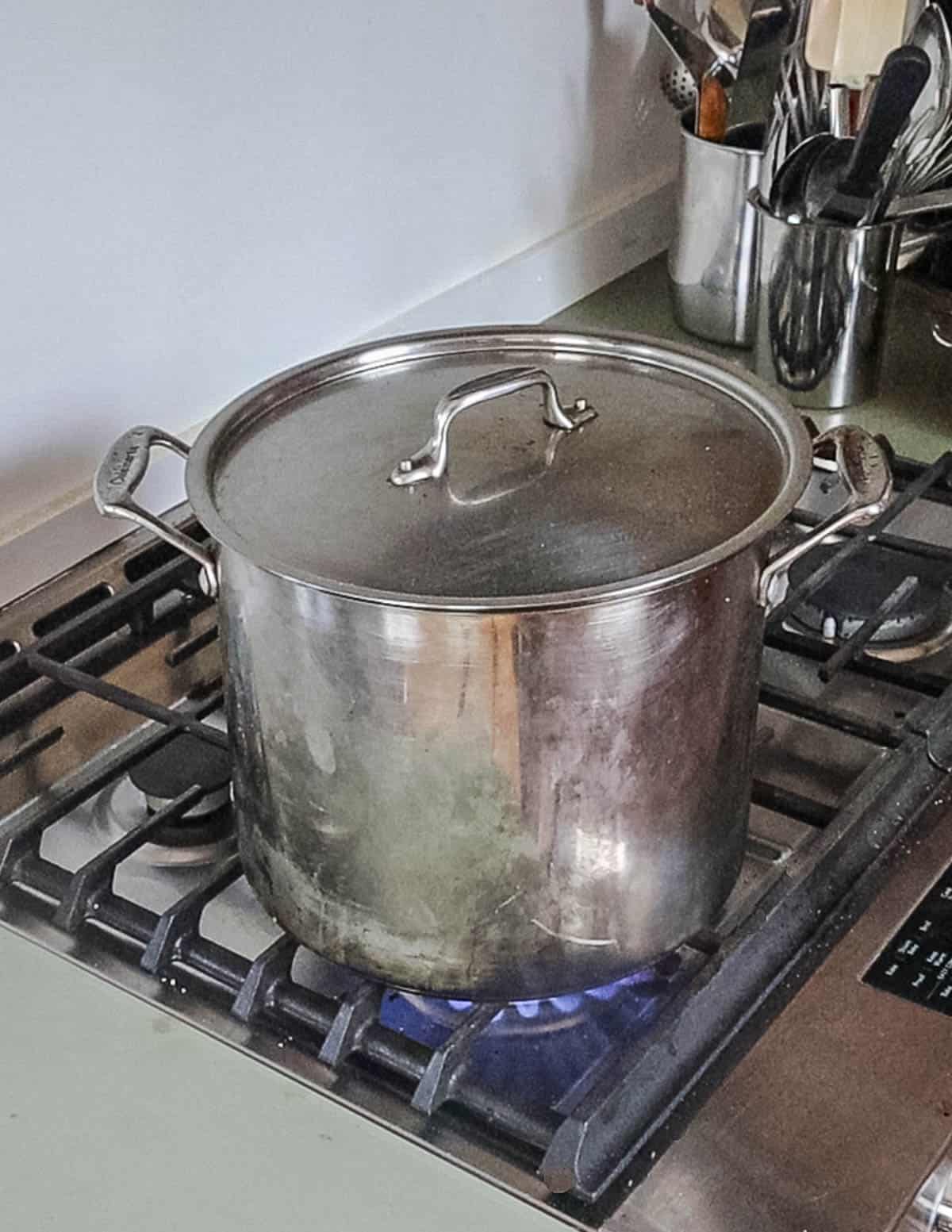
After the grapes are mashed up and I've added the water, I put the pot on the stove and allow it to get hot enough to steam. Don't bring the pot to a boil, you just want to get it warm as it makes the juice relax and will help it go through a strainer, which will give you the highest yield possible.
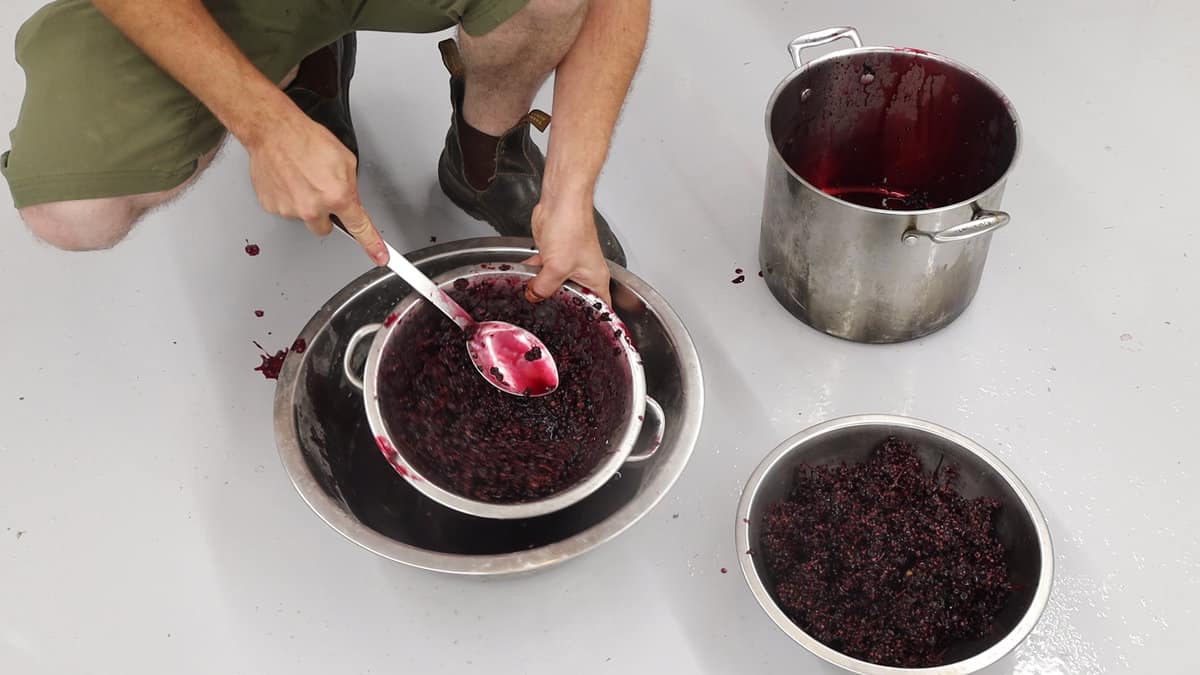
I carefully dump the grape juice and skins into a colander in a large bowl, allow it to drain, then I remove the leftover skins and stems, allow them to cool until I can handle them, then wring out the juice.
Typically I use cheesecloth to wring out the juice, but you can do it by hand if you have to. This can be a messy process, and you'll see in the video at the end of this post that I do it in a garage.
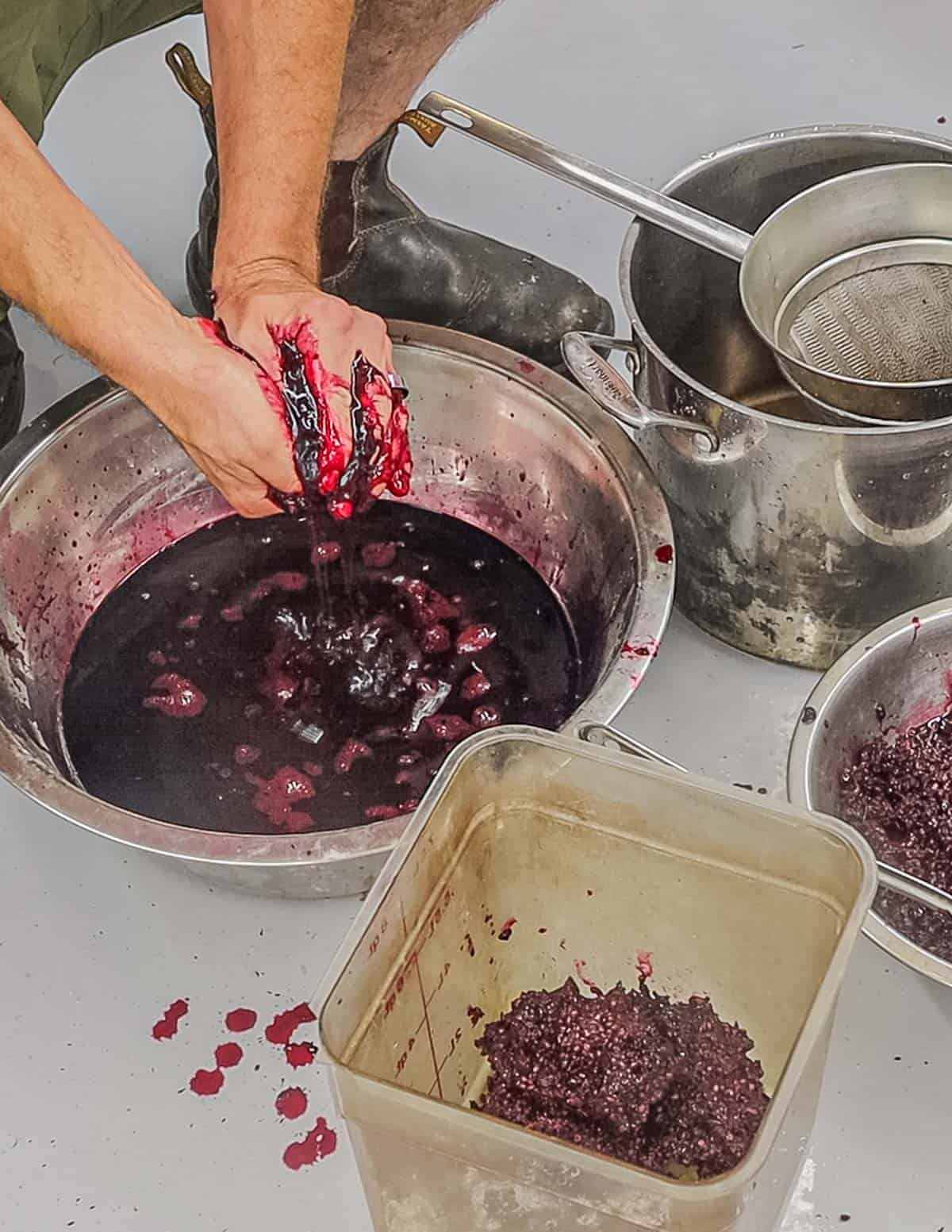
From here I strain the thick juice one more time through a fine strainer. The finished grape juice can be frozen, or processed into things like jelly or wild grape reduction, etc. You can use raw grape juice pressed from the fruit, but you'll get a lot less juice, and it's very strong.
Safety Note: Tartaric Acid
Wild grape juice isn't something to drink as-is, since it's very tart and thick. I can't drink the juice raw at all, as my tongue is sensitive to it, and I know others that share my sensitivity.
The most important thing to know is the juice contains tartaric acid and calcium oxalate crystals that can cause loose bowels when consumed.
Thankfully it's easy to remove the oxalate and tartaric acid as they settle to the bottom of the container after cooking and juicing. Let the juice settle overnight, then pour off the grape juice, discarding any sediment at the bottom.
What to Make with Wild Grapes
There's lots of things you can do with your grape juice, as well as the edible grape leaves. Here's a few examples.
Homemade Grape Vinegar
There's still goodness left in those wild grape stems, skins and pits, and while you could pour some water over them, mix them up, and strain it to get a weak juice.
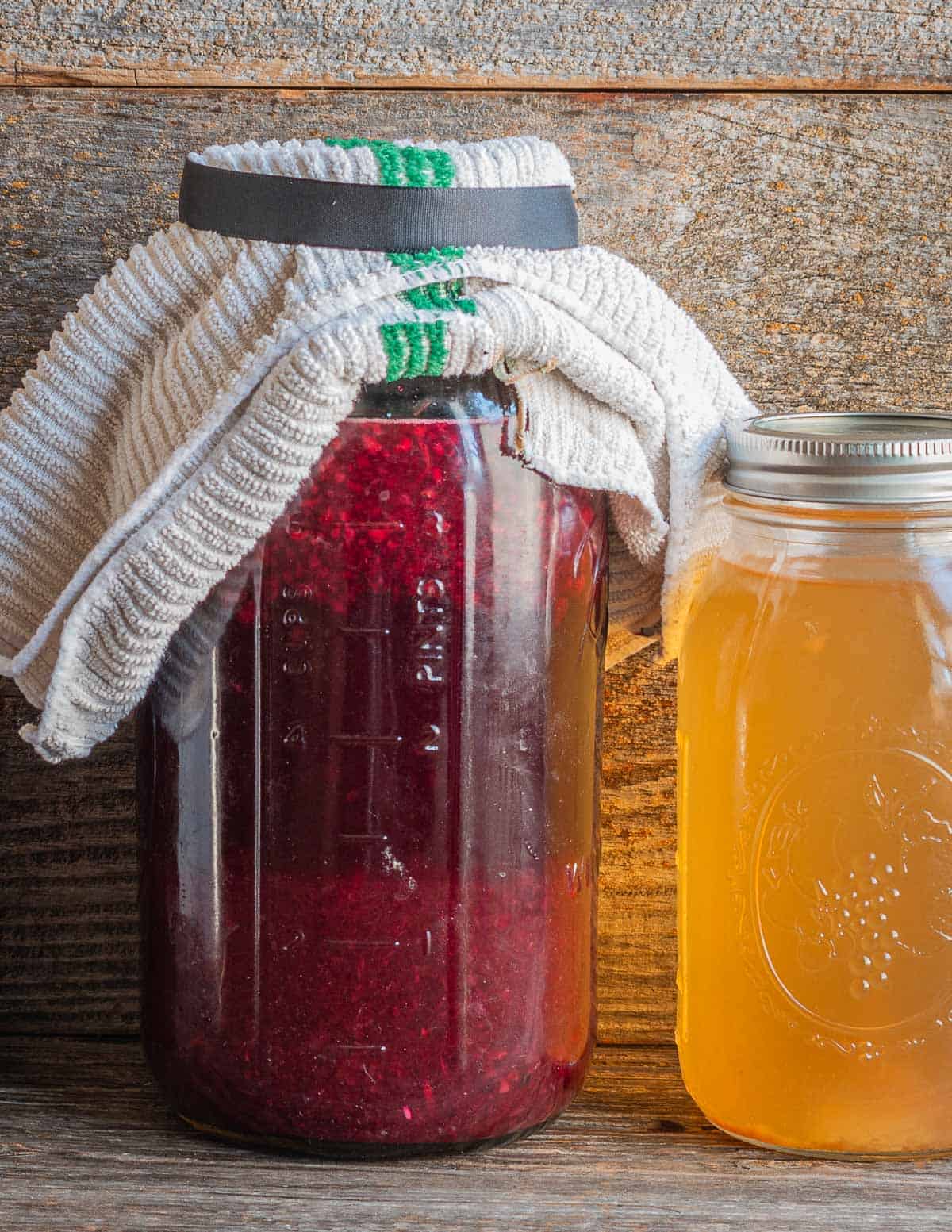
I prefer to use the leftover mash to make homemade vinegar that I use instead of red wine vinegar. It's fantastic. See the full recipe with proportions for fruit scrap vinegar here.
A Red Wine Substitute
The finished juice is perfect for wine, jams and jellies, but there's lots of other things you can do with it too. I use wild grape juice for all purpose cooking in recipes that call for red wine.
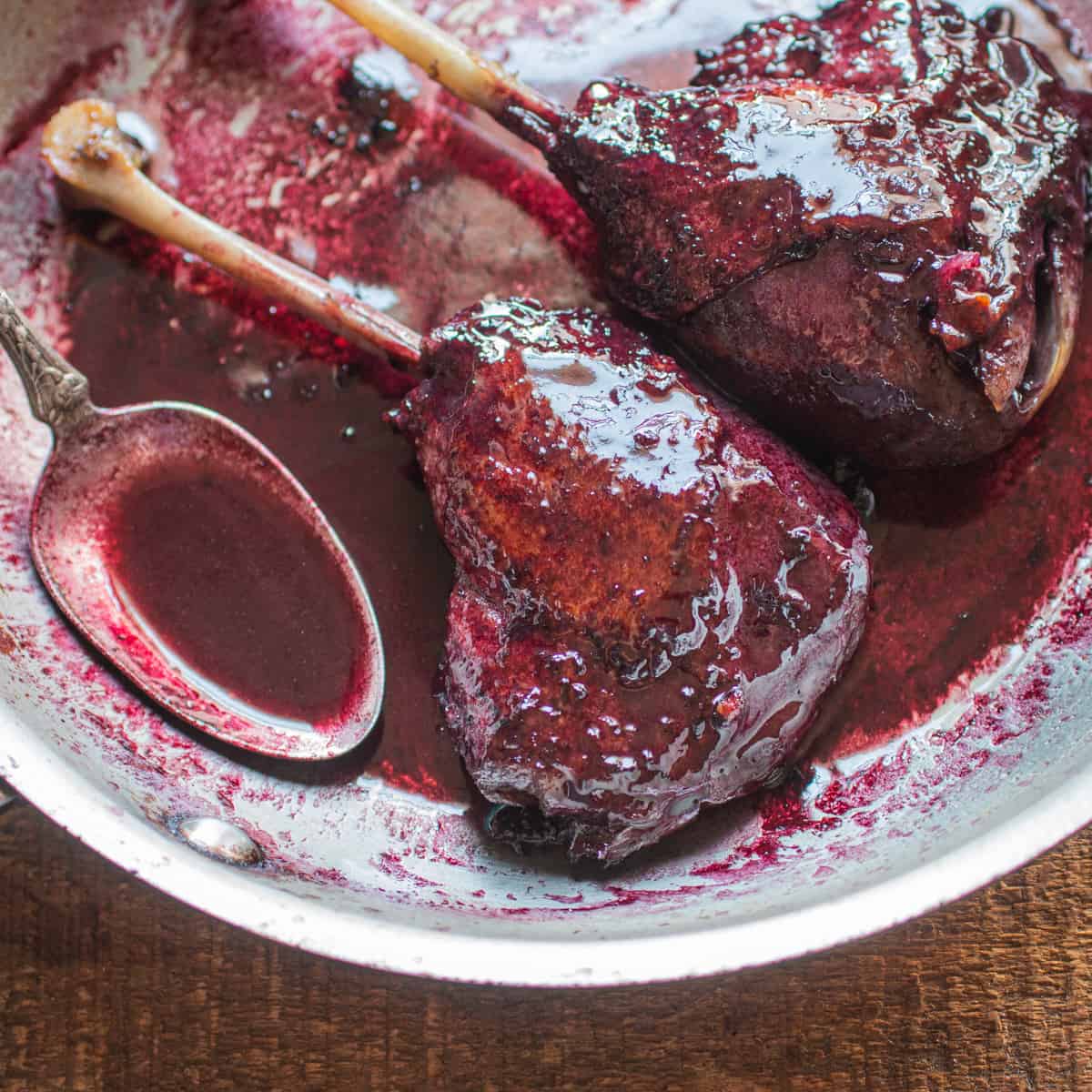
I also make a reduction from it you can use similarly to saba or balsamic vinegar reduction-a sort of wild grape molasses inspired by a traditional fruit juice reduction called pekmez from Turkey (typically made with mulberries).

Stuffed Grape Leaves
Wild grape leaves are essentially the same grape leaves sold in many stores, but it did take me a couple years and dating a Greek woman to figure it out.

Grape leaves should be harvested while you're checking on grapes growing throughout the season. Once the grapes are ready, a lot of the leaves will be past-prime. I can collect hundreds of leaves from a single vine or two in an hour if I'm working quickly.
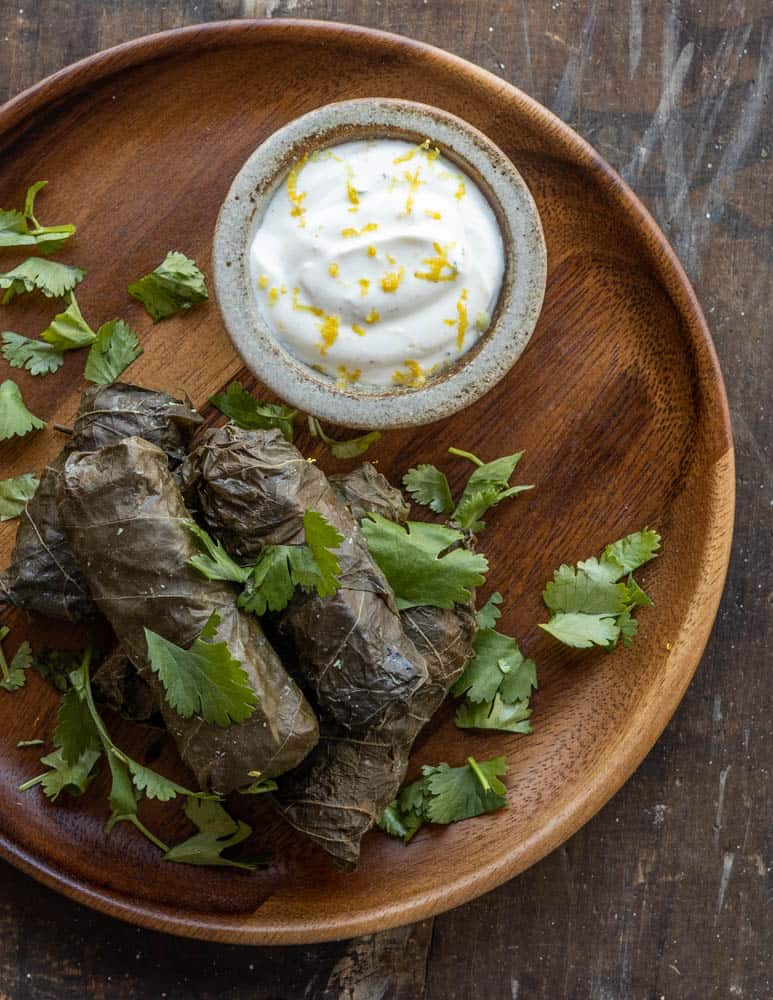
Fermented grape leaves are edible and fantastic for their most traditional use: stuffing. Since they're tough, tannic and sour, you're not going to be making a salad out of them, although I've had some preparations where the leaves are pickled or fermented and then cut into pieces and used in dishes.
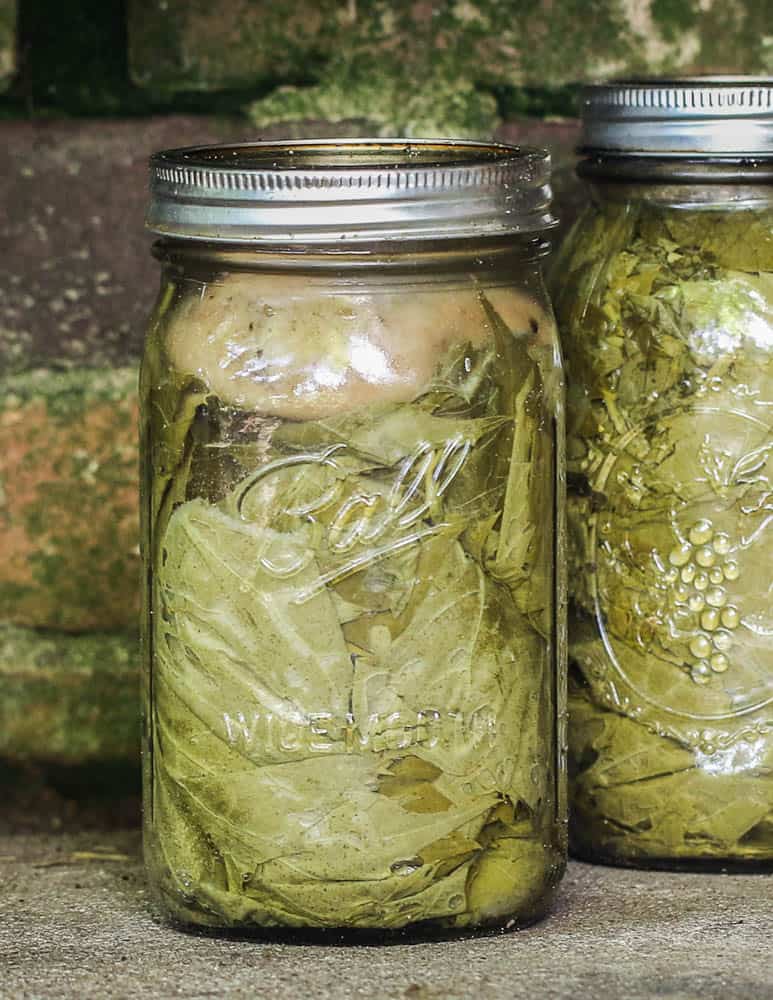
Fermented grape leaves are traditionally used for stuffing (dolma, dolmathes, dolmades, etc) and it's hard to find a better way to enjoy the leaves.
If you've ever had commercially pickled grape leaves, they can be very strong on the vinegar, and I know plenty of people that don't care for them. Foraged grape leaves you pick yourself though, are a blank canvas for whatever flavor you like. See my recipe for fermented grape leaves.
Grape Tendrils
These are small, but fun if you have some grape vines growing in the house or around the backyard. The young, tender tendrils/tips of grape vines are nice and tart, and add a great taste to salads. Try them!
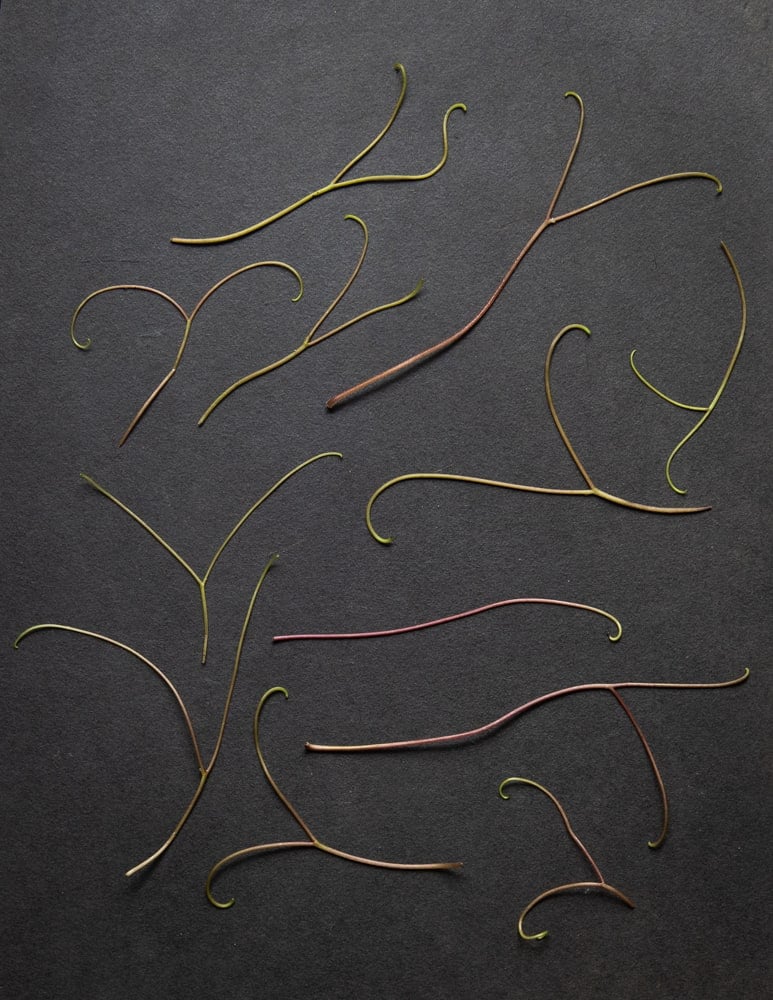
Wild Grape Jelly
Foraged grape jelly is one of the best you'll ever have. It's the grown up version of what you put on a peanut butter and jelly sandwich, but with a flavor beyond comparison of the watered-down jelly in stores. It's easy to make, and I often don't even use pectin as the seeds are naturally high in it.
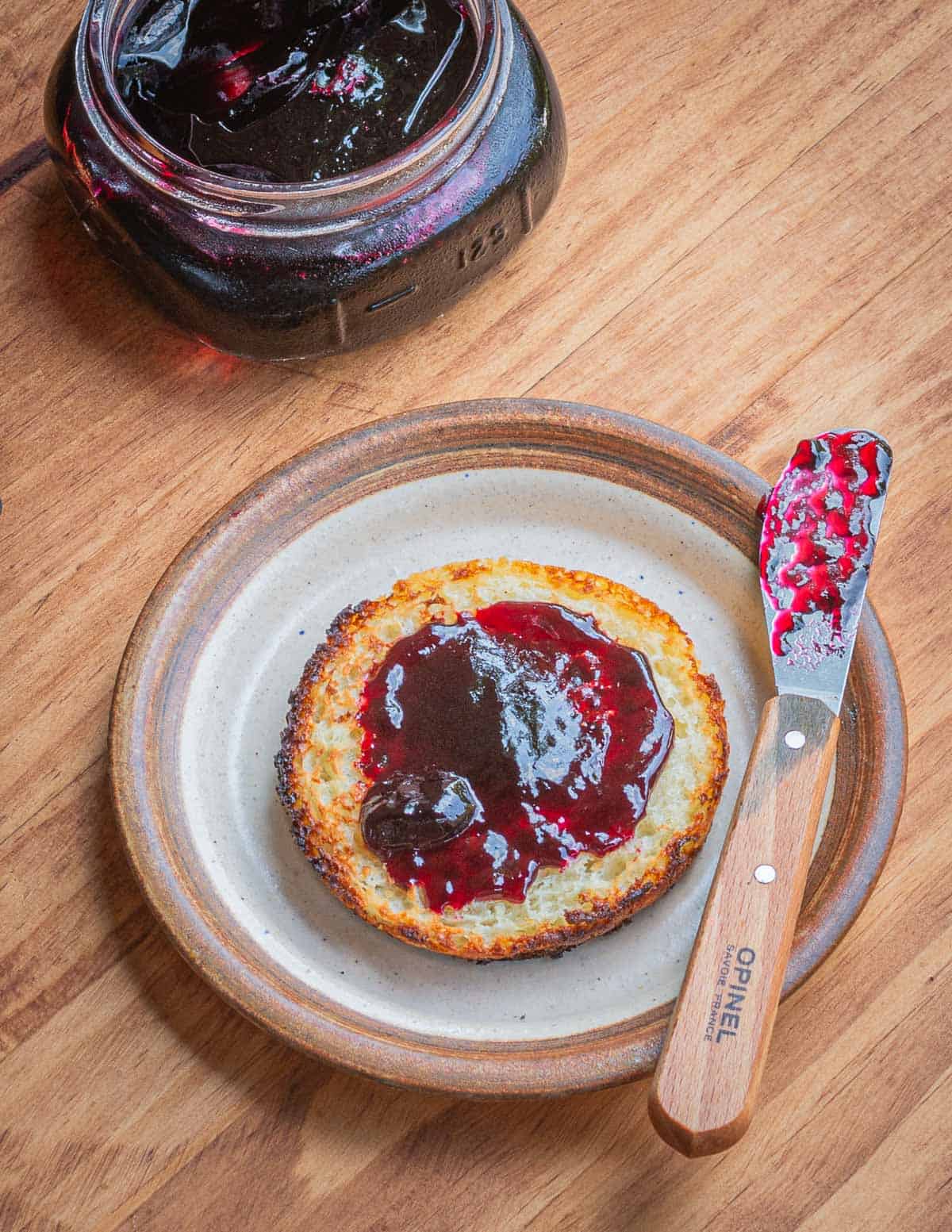
Wild Grape Recipes
- Wild Grape Jelly
- Greek Grape Molasses (Petimezi)
- Fermented Grape Leaves
- Grape Leaves Stuffed with Fruit and Nuts
- Bison Cooked in Wild Grape Juice
- Goose Confit Glazed with Grape Reduction
How to Process and Juice Wild Grapes.
Equipment
- Large stock pot (stainless steel)
- Potato masher
- Colander
- Fine mesh strainer
- Very large mixing bowl
Ingredients
- Wild grapes, at least 5 pounds, preferably more.
- Water, enough to cover the mashed grapes by an inch or two.
Instructions
- Harvest ripe wild grapes. I like to use a scissors to remove the whole clusters to make sure they don't get bruised or smashed during transport.
- Inspect the grapes and eat one of two to see if they have any grit, mine are often so clean I don't bother to wash them, but this can vary depending on where you harvest. Grapes on the edge of a working field might be very dirty.
- Put the grapes into a pot, stems and all, then mash them up until juice nearly comes to the top with a potato masher or another blunt object.
- When the grapes are well mashed, add some water to cover them by about an inch.
- Cover the pot and put it on a burner, then warm it until the pot is steaming. Do not allow it to boil.
- Working in a place that's easy to clean, like a garage or outside, put a large colander into an even larger bowl then carefully pour the grape juice and stems into the colander. Allow the juice to drain out, then remove the wild grape mash and allow to cool until you can handle it.
- Wring out the excess grape juice from the warm mash. Reserve the mashed grapes to make wild grape vinegar (optional). Strain the juice through a fine mesh strainer, then portion into containers and freeze, or use to make jams, jellies, wine, grape molasses, etc.
Racking off the tartaric acid
- Before using wild grape juice, allow the tartaric acid to settle overnight in a fridge in a clear container. Pour off the juice and discard the tartaric acid sludge at the bottom.
Making vinegar with the leftover skins and seeds
- Save the leftover skins and stems to make wild grape vinegar (refer to my recipe for fruit scrap vinegar)

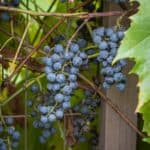
Michelle
Well, I never heard back on my comment about fermenting grape juice, but I’ll tell you what I did because I’m totally with thrilled with how it turned out. I did a raw juicing - old school style with feet! Best homeschool Co-op project 😂 After straining the juice, I put it in a glass container with cheese cloth secured on top and out it in a dark area (or, wrapped a dark towel around it because I don’t have that kind of space). I stirred it everyday until it began getting frothy. At this point I diluted the juice (1/4th cup filtered water per 1 cup juice), and added honey (2 tbs per cup of undiluted juice). Once thoroughly mixed, I added them to fermenting bottles, covered from light. I burped these daily until they seemed good. Oh my goodness! So bubbly and fermenty, but not alcoholic. It was SUCH a hit!! I am curious how different the flavor would be if I cooked the grapes as you suggest here, more for curiousity’s sake I loved the flavor of this grape ferment.
Alan Bergo
Hey Michelle. Sorry, I’ll check the spam filters. I’ve had to hire a new company to handle spam as I’ve been having thousands of AI spam comments a day for the past couple months.
On a lighter note I think you just showed me how I can ferment grape juice. My last batch didn’t turn out but this sounds just great. Thank you.
Michelle
No worries! You’ve always been responsive, so I waited awhile before checking back in. That’s super annoying re:bots. :/ Originally, I couldn’t find anything online or in my fermentation books about a raw, natural fermentation for wild grape juice that also wasn’t about making wine - it was fun to experiment on my own, though I was nervous. I’ve got one bottle left 😋
Michelle
Hi Alan! I’m back again. This year year it’s wild grapes! Last year u harvested with friends and enjoyed some fresh juice (more like shots, haha), grape jelly, and grape jello jigglers with Honey and grass-fed beef gelatin. Delish! This year, we found MORE and I have a half gallon of juice. What I really want to do is ferment it. I don’t care particularly about wine, but I like the idea of a fizzy grape juice. I’m having trouble finding a recipe that doesn’t cook it (because I already pressed them raw - we went with the ancient foot method 😆) AND that uses wild fermentation. Any advice? I don’t want to ruin my batch 😅 Though I still have a frozen quart of juice from last summer too. Thanks for any advice!
P.s. about a month ago I made homemade PawPaw ice cream and sprinkles it with walnut&maple-syrup candied black walnuts. It’s amazing. I also made a “butter pecan”, but with the same candies black walnuts. Again, amazing. 😋
Jeanine miessner
Hi, the young clusters have been stripped bare by something and there is a powdery brown residue on the ground beneath the vines. There is new growth of leaves. Do you know what this is and how to get rid of it.
Thanks for any help you can provide
Jeanine
Alan Bergo
Sorry Jeanine I don't know here. I'd look up common grape pests. I've seen that too though. My first thought is to start looking at grape fungal diseases. Maybe start here.
Brett
HELP! I have these grapes growing beside my garage that were there when I moved in 16 years ago. I have used them for jam/jelly, wine and (my favourite) juice. What I don't know is whether they are Valiant grapes or Vitis riparia (Riverbank/native grape). they look like riparia, but no one specifically describes riparia's taste (They say tart, or strong or not good, but these are not good descriptors), and mine taste EXACTLY like concord grapes, and even have the little pocket of seeds in a jelly filled sack in the middle. Can anybody accurately describe the taste of riparia vs concord?
Alan Bergo
The taste is indistinguishable.
Elena
Hi we notice that grape started growing fast and made trellis goe it. 3rd years made wine but grape green. Vancouver island
Johnny
why would you harvest grapes so early in the season? My grandmother harevested grapes after a frost. the grapes are sweeter then and make better juices and jellies
Barney Casto
Alan, I'm 74 yrs old, as a kid my mother made wild grape jelly every year, but in the last 30 years there are no wild grapes here anywhere, would it be possible for you to send me some starts in the spring? I will be more than happy to pay the shipping. Thanks, Garnet.
Alan Bergo
I'm sorry Barney, I'm waaay too busy to do that. Wild grapes are very common and widespread, I would ask in a FB group or another wild food forum, they are legion.
Ellen
I'd be happy to send you a few jars of my wild grape jelly for you to enjoy.
Erica Schroyer
While wrangling children and attempting my first simmer of grapes, they boiled for likely a few minutes. Do I need to toss the juice? Will it have cooked in the tartaric acid or anything like that? Luckily it's a small amount but don't want to waste it if it'll still be edible...
Alan Bergo
No you're fine, the only thing to know is that you will have activated the natural pectin in the seeds. Not a problem at all, especially if you want to make jelly.
Erica Schroyer
Thanks very much! It was my first time, very small & delicious batch (though quite tart perhaps due to early harvest) and we drank it all up happily, without a worry after your response. Looking forward to harvesting and processing more.
Alan Bergo
Glad it worked for you.
Robin Roberts
This year I found more grapes than I can use! Ask around like I did and you will find many who still have grapes growing near their house!
Alan Bergo
Thanks for sharing Robin.
Bill McDuff
Alan, I finally got around to picking some wild grapes along the lake yesterday. The variety appears to be riverbank or frost grapes. They've had a few nights of light frost which should improve the taste. Just letting the tartaric acid settle to the bottom before boiling with sugar and a bit of lemon juice. I'll let you know how it turns out. Keep up the good work your posts are always inspiring. Regards from Canada Bill
Sam Wallace
I have three different native grapes growing on my property. It never ceases to amaze me that one kind of fruit cam have so many variations in flavor. Wonderful stuff. I didn't know about using the tendrils, so I will have to give that a try. As for boiling the juice down, the ancient Romans used a half to a quarter reduction for their recipe and called it defrutum, so that trick has been around for a while. They liked it with garum as a dipping sauce, which may be an acquired taste.
Alan Bergo
If you like the idea of defrutum you should definitely look up pekmez and sukuc.
Jeff Iskierka
Sitting at the fire station this weekend I had to check on the Black Raspberries that usually grow behind the station. This year there is many vines growing. Look like grapes. So into the station with one I came to have a look at the internet. Yes, there were small grapes starting too. Sure enough, wild grapes, confirmed they were not any lookalikes. (moonseed) So I have about 75 of varying sizes as I am not sure how big/old/tough they will be. I plan to ferment them in a brine much like the kraut. I had to check your site, knowing you would have attempted some sort of dish with them. Again, really enjoy your info you share. I only hope I encounter some not so stringy. If so, I wonder what else fermented grape leaves would be good for? I guess first see how they taste.
Alan Bergo
Hey Jeff, I updated the post, thanks for reminding me of it. The grape leaves are actually easy to cook and stuff for making dolmas. Blanch the leaves in salted water first, then you can pickle them, or simply stuff them with meat and rice, wrap them tightly, and steam them until the leaves are tender and the meat filling is cooked through. We've been serving them on the relish tray at the Salt Cellar. If you don't have a steamer, you can improvise one with a colander inside of stock pot, or you could just braise them in the oven, they're great.
Jessie
Hello!
Husband made the Wild grape jelly and I put "The seeds and flesh of the berries are reserved, put into a container and covered with vinegar. After a month or two or even a few weeks the vinegar is very strongly flavored of grapes, and then I add sugar to the vinegar, cook it down to syrup and then add that to sauces, salad dressings, etc, its also good poured over vanilla ice cream, much like the Italians do with nice balsalmic vinegar."
Could you advise how much sugar to how much "of the wild grape vinegar" is to make the syrup.
Would like the recipes for it. Thank You!
Jessie
Hello!
Husband made the Wild grape jelly and I put "The seeds and flesh of the berries are reserved, put into a container and covered with vinegar. After a month or two or even a few weeks the vinegar is very strongly flavored of grapes, and then I add sugar to the vinegar, cook it down to syrup and then add that to sauces, salad dressings, etc, its also good poured over vanilla ice cream, much like the Italians do with nice balsalmic vinegar."
Could you advise how much sugar to how much "of the wild grape vinegar" is to make the syrup.
Would like the recipes for it. Thank You!
Alan Bergo
I would combine the vinegar with equal parts sugar and cook into a simple syrup. The consistency can be adjusted by less or more reduction.